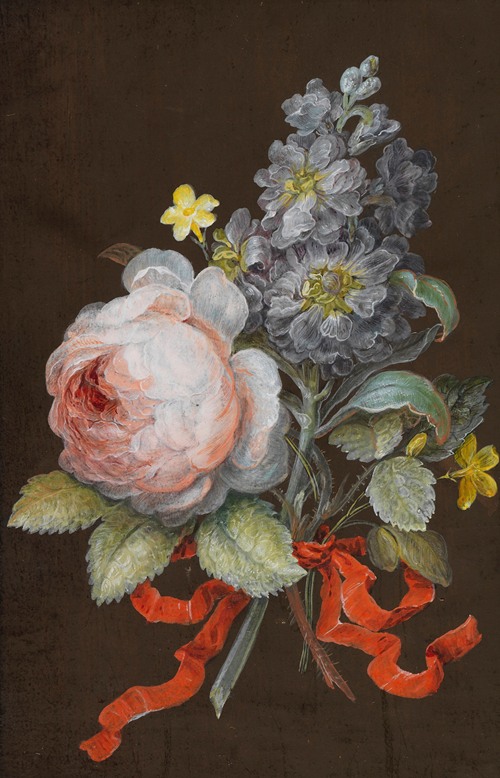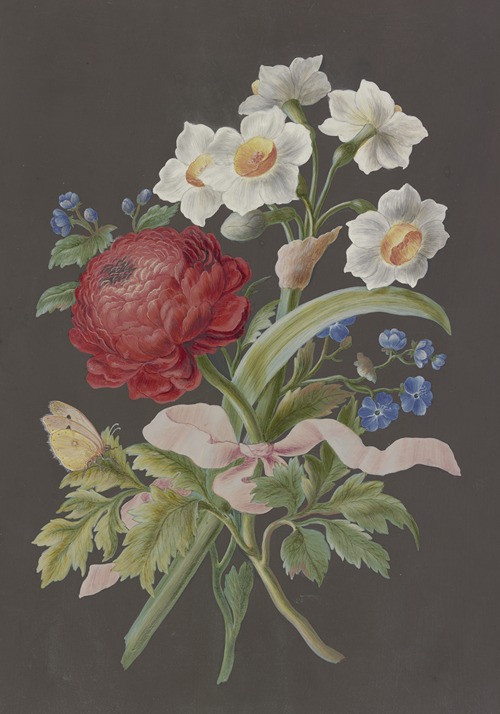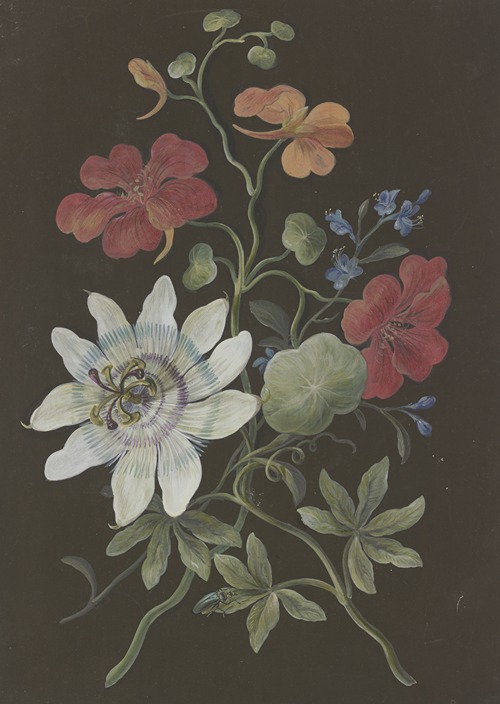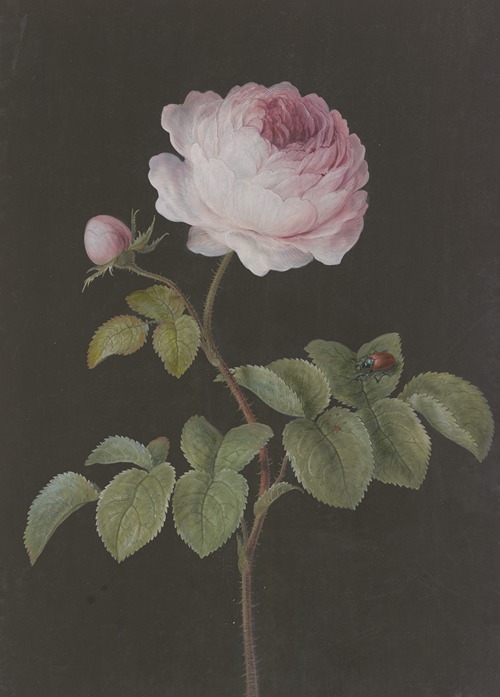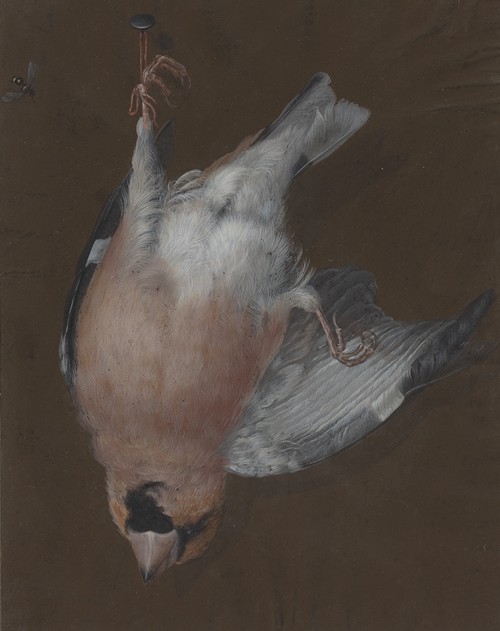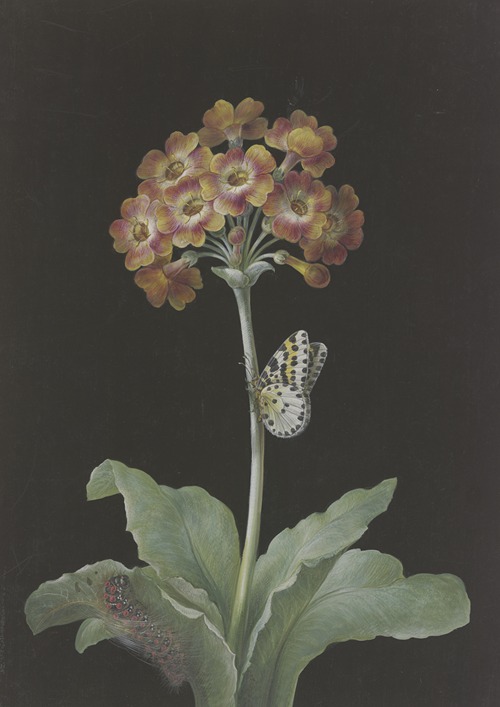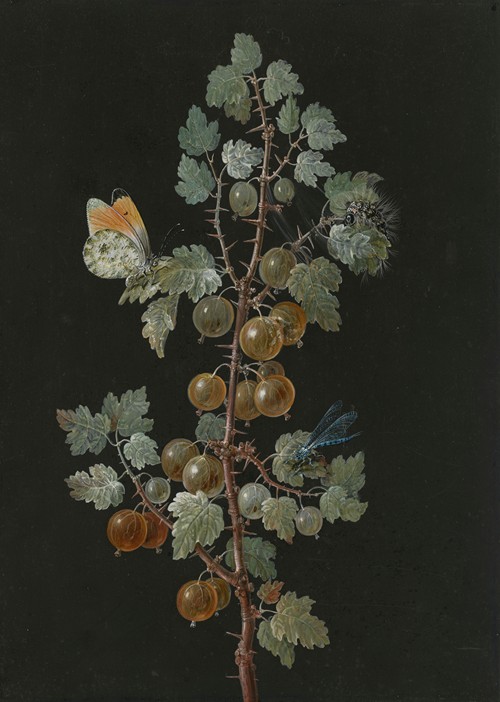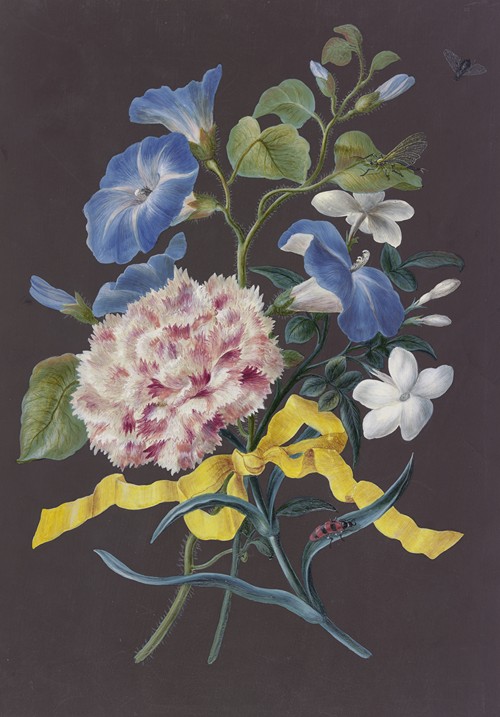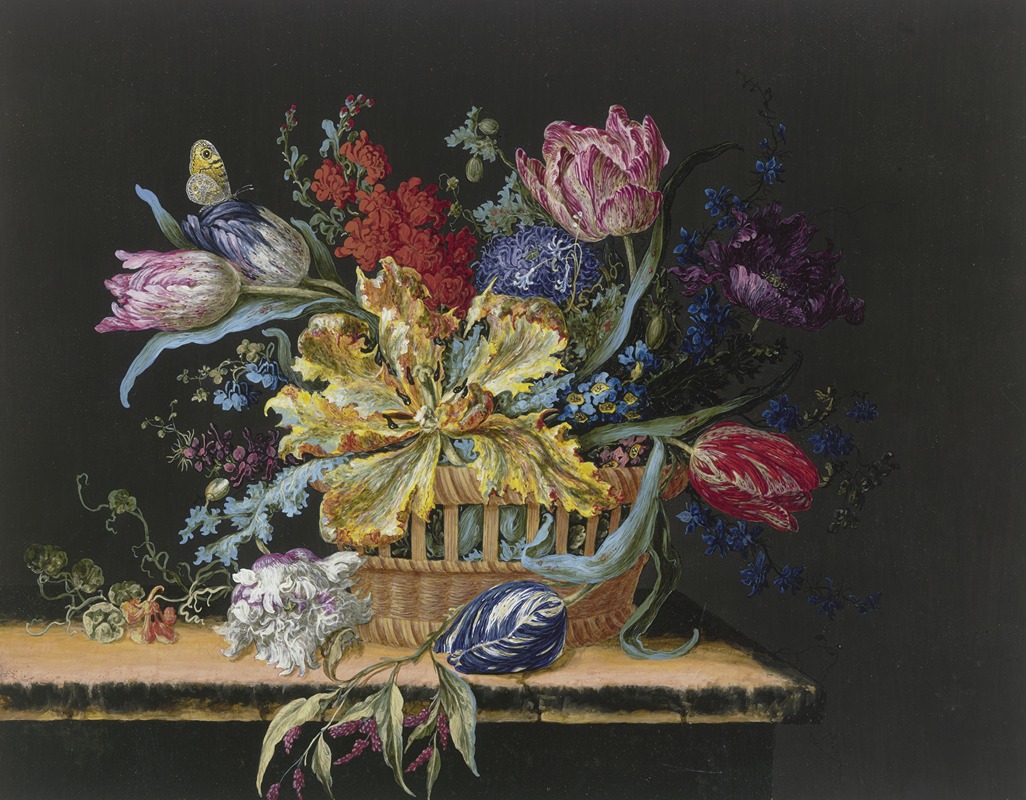
Barbara Regina Dietzsch was a Bavarian painter and engraver known for her still lifes.
Barbara Regina Dietzsch was born in the Free Imperial City of Nuremberg. Members of Dietzsch's family, including her father, Johann Israel, brother Johann Christoph, and sister Margareta, were employed by the Nuremberg courts. Dietzsch taught Margareta how to paint.
Dietzsch was married to Nikolaus Christopher Matthes, who was also a painter. The couple resided in Hamburg. Dietzsch eventually returned to Nuremberg where she died in May 1783.
Dietzsch specialized in watercolor and gouache paintings of animals and plants. Dietzsch primarily painted flowers, and she also painted birds and shells. Her works are typically identifiable by their brown or otherwise monochromatic backgrounds. These works were made into engravings, most of which Dietzsch created herself.
Her works sold in Germany, England, Holland, and France. They were collected in the Netherlands and England. Additionally, although Dietzsch herself did not illustrate textbooks, her works have been included in German natural history books. Christoph Jacob Trew, a physician and botanist, was a patron of botanical art in Nuremberg, including that of the Dietzsch family. Her work was influential on artist Ernst Friedrich Carl Lang.
The Dietzsch family used art to portray the natural world in a way that reflected the philosophical and scientific advancements of their time. Germaine Greer describes Dietzsch's work as "exact and linear, as one might expect of designs for engraving, but in her more ambitious flower pieces she exhibited a conservatism of approach which was fairly antiquarium."
The similarities in style and subject matter of works by Dietzsch and works by her family members have caused challenges in attribution.

